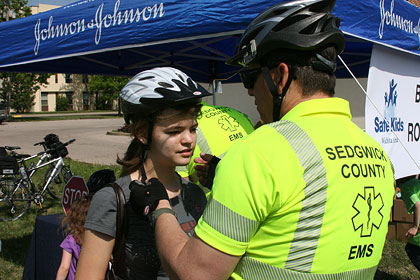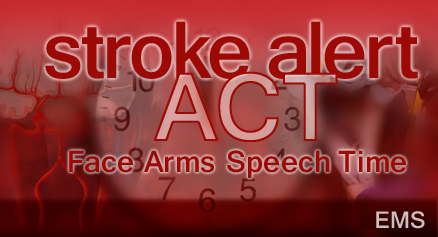Prevention and Education
Hot Weather Safety
Warning signs of dehydration or heatstroke:
- Headaches
- Dry mouth
- Dizziness
- Difficulty breathing
- Fatigue or weakness
- Nausea or vomiting
- Fast heart rate
- Impaired judgment
- Muscle cramps
- High body temperature – a temperature over 104.5° F indicates heatstroke
Precautions:
- Drink plenty of water and other hydrating fluids, but stay away from soda, caffeine and alcoholic beverages, which can dehydrate the body.
- Avoid outdoor activities during the hottest part of the day, which is usually between noon and 4 p.m.
- If you don’t have an air conditioner, or yours is broken, use fans to cool yourself. But remember, fans cool people, not rooms, so turn it off when you leave a room.
- Check with older neighbors to make sure they are taking precautions and not suffering from heat-related illnesses.
- Wear sunscreen when outdoors! Don’t forget to protect your body’s largest organ – your skin.
- Don’t submerge yourself in water to cool down if you aren’t a strong swimmer.
- Monitor children closely when around water.
Cold Weather Safety
Hypothermia
Warning Signs
- Shivering, drowsiness and exhaustion
- Confusion and fumbling
- Memory loss and slurred speech
- In infants - bright red, cold skin and very low energy
What to Do
- Seek warm shelter
- Remove wet clothing and use blankets, clothing, towels or sheets to warm the body. Start with the chest, head and neck.
- Seek medical attention as soon as possible.
- Drink warm beverages. Avoid alcohol.
Frostbite
Warning Signs
- White, gray or yellow skin color
- Numb, firm or waxy feeling skin
What to Do
- Get out of the cold, protect exposed skin, and seek emergency medical care.
- If feet are affected, AVOID walking, as this will encourage further tissue damage. Immerse the affected area in warm, not hot, water.
- Warm the affected area, but DO NOT rub or massage the area! This will encourage further tissue damage.
- When warming the area, do not use a heating pad, heat lamp, or heat from a stove, fireplace, or radiator. The affected areas are numb and can be easily burned.
Stroke Alert Act F.A.S.T.
Warning Signs
- Sudden numbness or weakness in the face, arm or leg, especially on one side of the body
- Sudden confusion, trouble speaking or understanding
- Sudden trouble seeing in one or both eyes
- Sudden trouble walking, dizziness, loss of balance or coordination
- Sudden, severe headache with no known cause
Act Quickly to Limit Permanent Damage - Use the F.A.S.T. Approach
Face
- Ask the person to smile.
- Does one side of the face droop?
Arms
- Ask the person to raise both arms.
- Does one arm drift downward?
Speech
- Ask the person to repeat a simple sentence.
- Are the words slurred? Can he/she repeat the sentence correctly?
Time
- If the person shows any of these symptoms time is important.
- Call 9-1-1 or get to the hospital fast. Brain cells are dying.
Effects of Stroke
The effects of a stroke depend on several factors, including the location of the obstruction and how much brain tissue is affected. However, because one side of the brain controls the opposite side of the body, a stroke affecting one side will result in neurological complications on the side of the body it affects.
Right Brain
If the stroke occurs in the right side of the brain, the left side of the body (and the right side of the face) will be affected, which could produce any or all of the following:
- Paralysis on the left side of the body
- Vision problems
- Quick, inquisitive behavioral style
- Memory loss
Left Brain
If the stroke occurs in the left side of the brain, the right side of the body will be affected, producing some or all of the following:
- Paralysis on the right side of the body
- Speech/language problems
- Slow, cautious behavioral style
- Memory loss
Risk factors you can control
- High blood pressure
- Cigarette smoking
- Alcohol and drug abuse
- Diabetes
- Carotid artery disease
- Peripheral artery disease
- Atrial fibrillation
- Other heart disease
- Sickle cell disease (also called sickle cell anemia)
- High blood cholesterol
- Poor diet
- Physical inactivity and obesity
Risk factors you can’t control
- Age — The chance of having a stroke approximately doubles for each decade of life after age 55.
- Heredity (family history) — Your stroke risk is greater if a parent, grandparent, sister or brother has had a stroke.
- Race — Blacks have a much higher risk of death from a stroke than whites do. This is partly because blacks have higher risks of high blood pressure, diabetes and obesity.
- Gender — Stroke is more common in men than in women. In most age groups, more men than women will have a stroke in a given year. However, more than half of total stroke deaths occur in women. At all ages, more women than men die of stroke. Use of birth control pills and pregnancy pose special stroke risks for women.
- Prior stroke, transient ischemic attacks, or heart attack
Heart Attack
Warning Signs
- Chest discomfort. Most heart attacks come on slowly with discomfort in the center of the chest that can feel like uncomfortable pressure, squeezing, fullness or pain.
- Discomfort in other areas of the upper body, such as the arms, back, neck, jaw or stomach.
- Shortness of breath.
- Cold sweat, nausea or lightheadedness
What to Do
- Call for help. Calling 9-1-1 is almost always the fastest way to get lifesaving treatment. Emergency medical services staff can begin treatment when they arrive and are trained to revive someone whose heart has stopped. Patients who arrive by ambulance usually receive faster treatment at the hospital, too.
- If you can't access EMS, have someone drive you to the hospital right away. If you're the one having symptoms, don't drive yourself, unless you have absolutely no other option.
Cardiac Arrest
Warning Signs
- Cardiac arrest strikes immediately and without warning.
- Sudden loss of responsiveness. No response to gentle shaking.
- No normal breathing. The victim does not take a normal breath when you check for several seconds.
- No signs of circulation. No movement or coughing.
What to Do
- Call 9-1-1 and begin CPR immediately.
- If an automated external defibrillator (AED) is available and someone trained to use it is nearby, involve them.
Bike Helmets

A fall from a bike can be serious, especially if you hit your head. Wear a helmet to protect your head.
Step 1 - Size: Measure your head for approximate size. Try the helmet on to ensure it fits snuggly. While it is sitting flat on top of your head, make sure the helmet doesn’t rock side to side. Use sizing pads to ensure a proper fit.
Step 2 - Position: The helmet should sit level on your head and low on your forehead—one or two finger-widths above your eyebrow.
Step 3 - Side Straps: Adjust the slider on both straps to form a “V” shape under, and slightly in front of, the ears. Lock the slider if possible.
Step 4 - Chin Strap: Buckle your chin strap in the center. Tighten the strap until it is snug, so that no more than one or two fingers fit under the strap.
Step 5 - Final Fitting:
- Open your mouth wide…big yawn! The helmet should pull down on the head. If not, tighten the chin strap.
- Does your helmet rock back more than two fingers above the eyebrows? If so, unbuckle and shorten the front strap by moving the slider forward.
- Does your helmet rock forward into your eyes? If so, unbuckle, tighten the back strap by moving the slider back toward the ear.
